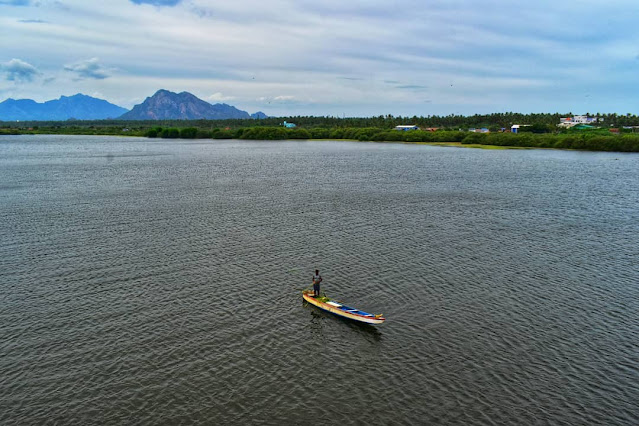Kanyakumari is the strategic southern tip of India in the bio-hot spot of the Western Ghats, UNESCO Heritage Site and part of the Agasthiarmalai Reserve, which has a rich repository of coastal and fresh water wetlands.
While covering only 6% of the Earth’s surface, wetlands provide a disproportionately high number of ecosystem services, in addition to maintaining biodiversity.
Coastal wetlands are vital for helping to mitigate climate change to manage extreme weather events through the multiple services they provide. Important wetland functions include water storage, groundwater recharge, cyclone protection, flood mitigation, shoreline stabilization, erosion control, and retention of carbon, nutrients, sediments and pollutants.
Presently, wetland ecosystems are severely affected by impacts of climate change such as sea level rise, coral bleaching, hydrological effects, changes in water temperature and alterations in water availability and quality.
Coastal wetlands are nature-based defence that can provide critical protection against cyclone, storm surges.
Mangroves and salt marshes reduce the speed and height of storm surges. Their roots bind the shoreline, resist erosion by wind and waves, and augment resilience against climate change according to Ramsar Convention.
The coastal wetlands of Kanyakumari are critical habitats for local, local migratory and migratory avifauna species, where migratory birds as garganey, shoveller, pintail duck, wigeon, black tailed godwit, pacific golden plover, red shank, green shank and Caspian tern visit from August to December annually. Local birds as greater flamingo, spot billed duck, herons, black winged stilt, open billed stork, white ibis, black ibis, glossy ibis, spoon bill and pelican are found in the wetlands. Ground nesting birds as black winged stilt breed in it.
Considering the rich avifaunal biodiversity the Tamil Nadu Government has declared the Suchindrum-Theroor wetland Complex and the Manakudy Estuary areas as Bird Reserves. To view the birds and to boost eco-tourism, the Kanyakumari Division of the Forest Department has installed watch towers to view the birds by the public and to monitor the birds. Earth mounds have been raised at Theroor lake, Rajakkamangalam lake to enable the birds take rest after a meal. A visitor can see the birds sitting on the mounds and taking rest. Pelican, Open billed stork, white ibis, comorants, darter breed annually in the Suchindrum Wetlands. Two species of the polyandrous Jacana breed in the freshwater wetlands, which build floating nests on water, while painted stork and pelican make local migration to breed in Koonthankulam about 65 kms away.
Many ecologically and economically services are rendered by the wetlands. The Mangroves in Manakudy are a fertile area of fish including crabs, prawns and other inland fish and the fresh water wetlands provide livelihood to many people who earn their living with freshwater inland fish in wetland ponds and lakes. The faunal diversity and abundance of bird species provides immense potentialities for Eco-tourism and Bird Watching and potential areas for researchers for avifaunal study.
Some of the threatening factors to the wetlands are severe encroachment of the banks of the ponds and lakes, pollution by degradable and non-degradable substances, sound pollution created by heavy vehicles and constant traffic, use of chemical based soaps for washing purposes and bathing , illegal leasing of the ponds and lakes for lotus culture, using the wetlands as dump yards, conversion of paddy and agricultural wetlands into residential areas, excessive growth of exotic weeds and non-maintenance of wetlands.
To create awareness to students and the public, Davidson Sargunam, takes them to the wetlands for eco-exposure programs and participatory interactions. He conducts Flamingo Festival each year as part of the sensitization program in Manakudy coastal wetland and conducts photo exhibitions in schools, colleges and to the public on birds for eco-sensitization.




No comments:
Post a Comment